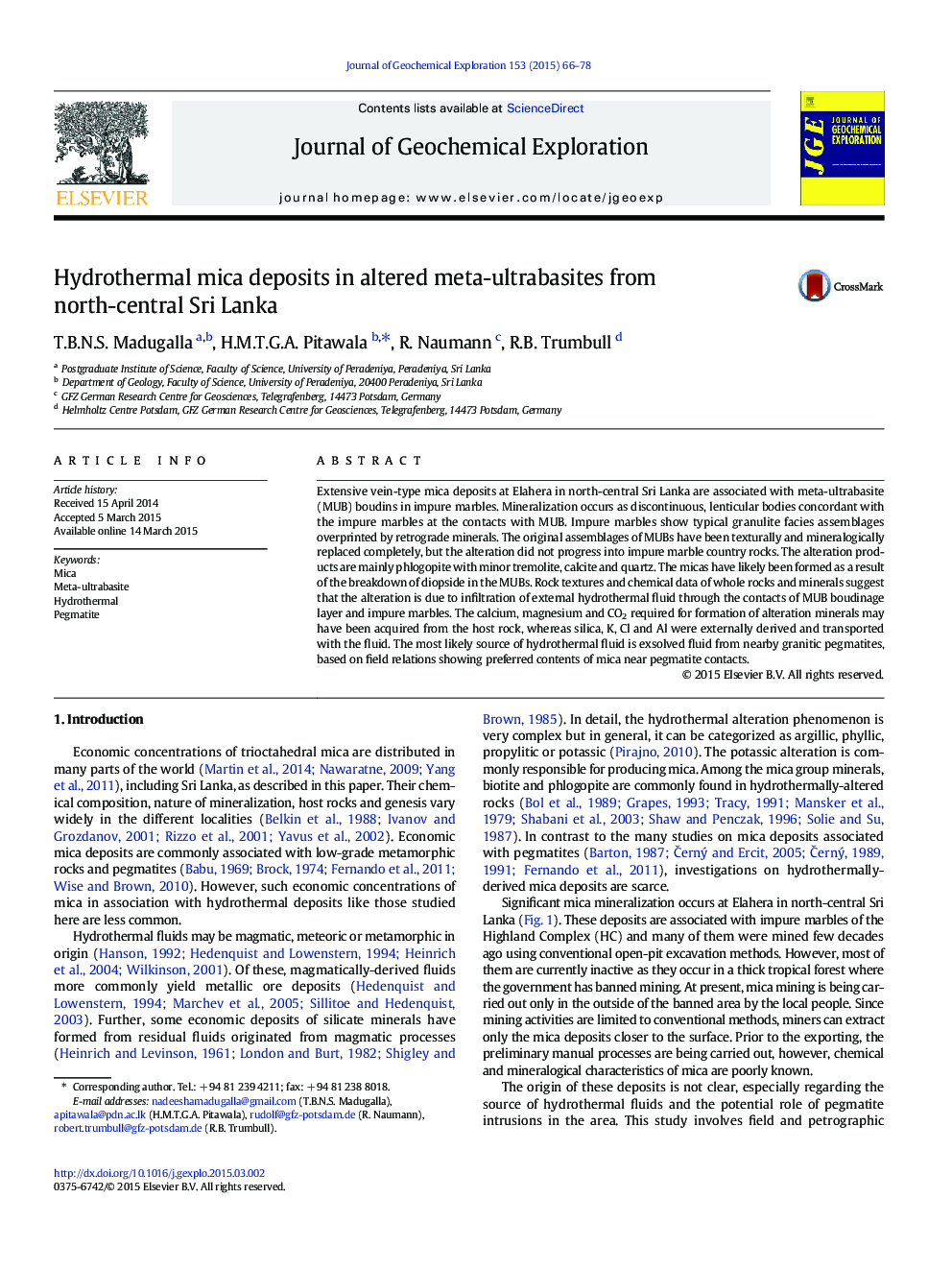| Article ID | Journal | Published Year | Pages | File Type |
|---|---|---|---|---|
| 4457156 | Journal of Geochemical Exploration | 2015 | 13 Pages |
•Vein-type mica deposits are found in north-central Sri Lanka.•The deposits have been formed by the hydrothermal alteration of meta-ultrabasites.•Major alteration products are phlogopite with minor tremolite, calcite and quartz.•The fluid was silica saturated and rich in K and Cl.
Extensive vein-type mica deposits at Elahera in north-central Sri Lanka are associated with meta-ultrabasite (MUB) boudins in impure marbles. Mineralization occurs as discontinuous, lenticular bodies concordant with the impure marbles at the contacts with MUB. Impure marbles show typical granulite facies assemblages overprinted by retrograde minerals. The original assemblages of MUBs have been texturally and mineralogically replaced completely, but the alteration did not progress into impure marble country rocks. The alteration products are mainly phlogopite with minor tremolite, calcite and quartz. The micas have likely been formed as a result of the breakdown of diopside in the MUBs. Rock textures and chemical data of whole rocks and minerals suggest that the alteration is due to infiltration of external hydrothermal fluid through the contacts of MUB boudinage layer and impure marbles. The calcium, magnesium and CO2 required for formation of alteration minerals may have been acquired from the host rock, whereas silica, K, Cl and Al were externally derived and transported with the fluid. The most likely source of hydrothermal fluid is exsolved fluid from nearby granitic pegmatites, based on field relations showing preferred contents of mica near pegmatite contacts.
